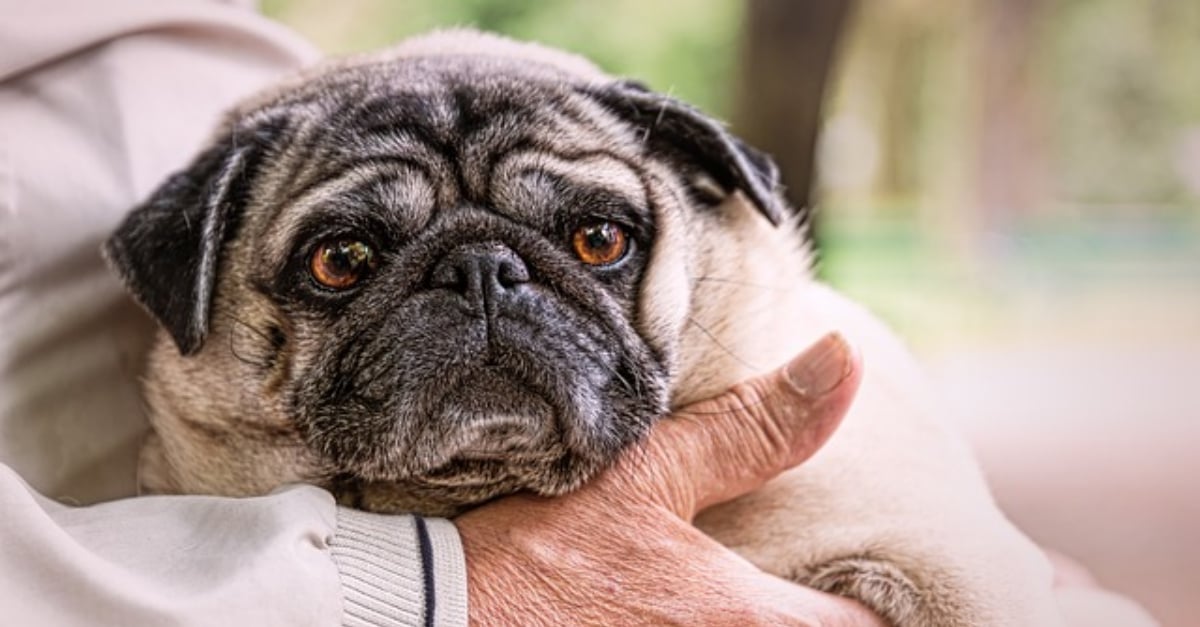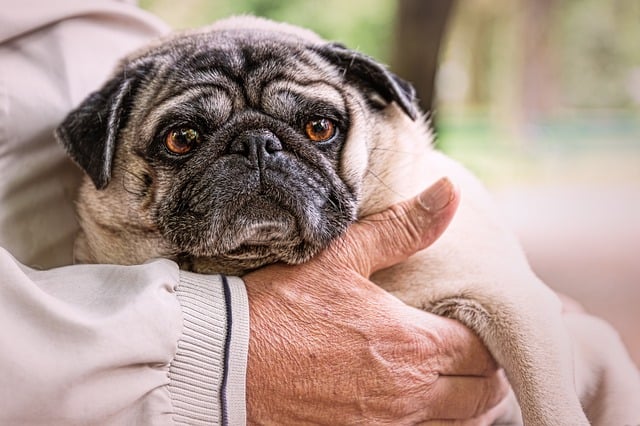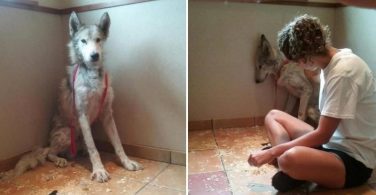10 Signs It Might Be Time To Say To Goodbye To Your Dog

Aging takes its toll on us all, whether we’re homo-sapiens or canines. It’s true how we’d all love our dog to pass naturally in their sleep, at the age of 110. However, sometimes that just isn’t the case. Injury and illness can strike doggos young and old, and because they can’t communicate what’s wrong, sometimes it’s up to us as dog parents to make the hard call so that they don’t suffer needlessly.
So how do you know when it’s time to say goodbye to your best friend? These 10 signs should help you decide.

#1 Loss of appetite
Name any dog you’ve ever met. Have they ever passed up a free meal? Maybe not even a meal, have they ever not tried to get a piece of whatever it is you’re eating? Loss of appetite is a bad sign in dogs. If their organs are shutting down, dogs will no longer have as great of a feeling of thirst or hunger. It might be something as benign as an upset stomach, but if they’re consistently rejecting food for a period of a week, it’s best to get them seen by their vet as soon as possible.
#2 Severe weight loss
One thing that can be hard to spot is weight loss. Gaining a few pounds here and there isn’t a big issue for humans, but if you were to wake up ten pounds lighter than you were the previous week, you’d have some concerns. The same goes for dogs. Most dogs only see a scale once a year at the vet, but if you notice your dog is significantly thinner than he was not too long ago? Get him to a vet.

#3 Chronic Pain
Like we said before, your dog can’t really communicate what’s going on in their body with you. So you should keep an eye on your dog’s language, body movements, and mobility. A lot of pain issues can be solved with medication; however, if they don’t get better quickly, and their quality of life seems impaired, it might be time to consider what else you can do end their suffering.
#4 Lack of interest in their usual hobbies
Does your dog like to play fetch? Maybe he likes belly rubs or barking at you when you come home. Dogs do these things because they enjoy them. If you start to notice that he or she no longer enjoys his favorite hobbies, this could be a warning sign. Dr. Andy Roark recommends creating a list of your dog’s favorite five activities and taking note of when they lose interest in them:
“When he or she can no longer do three or more of [the items on the list], quality of life has been impacted to a level where many veterinarians would recommend euthanasia.”
#5 Change in mood
This one goes hand in hand with the declining interest in usual hobbies. If your dog is usually good-natured and affectionate and becomes surly and aggressive, this could be a sign that his health has taken a knock. If they’re suffering from an illness or infirmity they cannot communicate to you, that’s definitely going to affect their mood. Especially take note if they start engaging in unpredictable behaviors like being aggressive around family members. If they’re sleeping a lot or just generally lethargic, this could be a sign of canine depression much the same way it is with humans.

#6 Social Withdrawal
Dogs are pack animals by nature. If they sense that their time is drawing to a close, they may engage in a behavior that sees them separate from the pack to try not to slow them down. Some canine behaviorists believe that this is a natural instinct for dogs and they do so as to minimise pain for loved ones. Not everyone is on board with this theory, but it does make sense. Dogs will seek out isolated areas and generally avoid contact with people they once loved being around.
#7 Poor bladder and bowel control
Senior dogs often have trouble towards the end of their lives with bathroom time. Everything from constant dripping of urine to making decisions to go to the bathroom in the house can be warning signs. This could be the result of a variety of ailments such as urinary tract infections, hormonal imbalances, degenerative spinal conditions, diabetes, and kidney disease. If your dog was never one to pee on the rug and suddenly starts doing so, best to take him to a vet.

#8 Respiratory problems
Breathing problems are common problems for dogs in the later stages of their lives. If their breathing sounds awkward or has long gaps in between each breath, get them to a vet. Dogs with breathing difficulties could end up with a chronic cough or something worse.
#9 Loss of Coordination
Outside of the regular aches and pains that come with being an aging dog, a dog towards the end of his life may be a little bit awkward on his feet. If you look at your dog and he seems dizzy or has trouble moving around the room or frequently bumps into things, you may have a problem. Often this will lead to dogs adopting a more stationary lifestyle.
#10 Poor equilibrium
If your dog can’t stand you need to do something about it. General mobility issues can be attributed to age and muscle soreness. However, you should still keep an eye on them. A dog that could once jump on a couch will find it incredibly distressing and depressing when they no longer can. This can lead to them trying and trying again until they collapse.
It’s important that we, as dog parents, know these signs. As hard as it can be to watch a loved one suffer, it is even worse for them having to live in that body. When the time comes, it’ll be one of the most difficult decisions we’ll have to make, but that doesn’t mean you should give up hope or take it lightly. Keep an eye out for these signs and consult your vet. Then you’ll know what to do when the time comes.

















